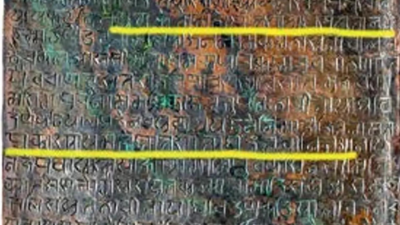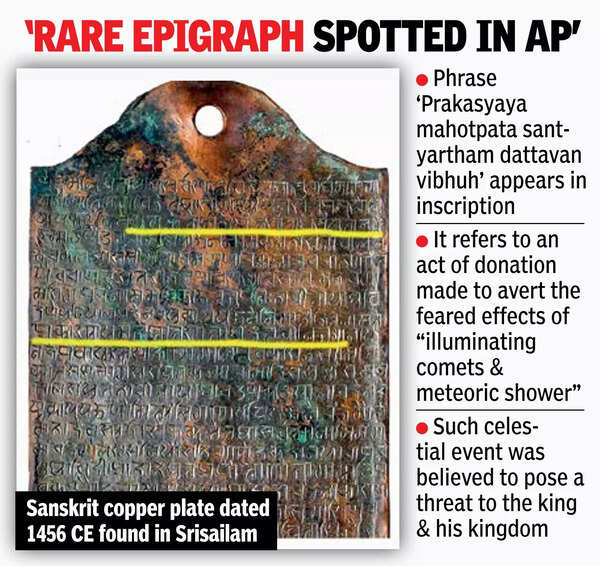ARTICLE AD BOX

HYDERABAD: In what is being described as a rare epigraphical discovery, the Archaeological Survey of India's (ASI) epigraphy division has found the first known Indian inscription referring to the appearance of Halley's Comet.
It was found in a Sanskrit copper plate charter dated 1456 CE from Srisailam, Andhra Pradesh, during the reign of Vijayanagara King Mallikarjuna.The inscription, engraved in Nagari script, clearly mentions a celestial phenomenon involving a comet and a subsequent meteor shower, ASI epigraphy director K Muniratnam Reddy said. It records a land grant in the form of a village made by the Vijayanagara ruler Mallikarjuna to a Vedic scholar on Saka 1378, Dhatru Ashadha ba 11, corresponding to Monday, June 28, 1456 CE.
The vedic scholar, a brahman named Limganarya, was from Kadiyalapura - likely present-day Kadiyapulanka in Kadapa district - and known for his expertise in astronomy.

The donation was made "in order to pacify the great calamity that is believed to arise due to the appearance of a comet (Dhumaketu mahotpata santyartham)" and its meteor shower (Prakasyaya mahotpata santyartham)," said Reddy. "From several historical records across the world, it is known that the appearance of Halley's Comet in 1456 CE was interpreted as a bad omen," said Reddy.



.png)
.png)
.png)
















 3 hours ago
5
3 hours ago
5









 English (US) ·
English (US) ·